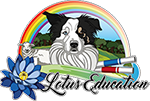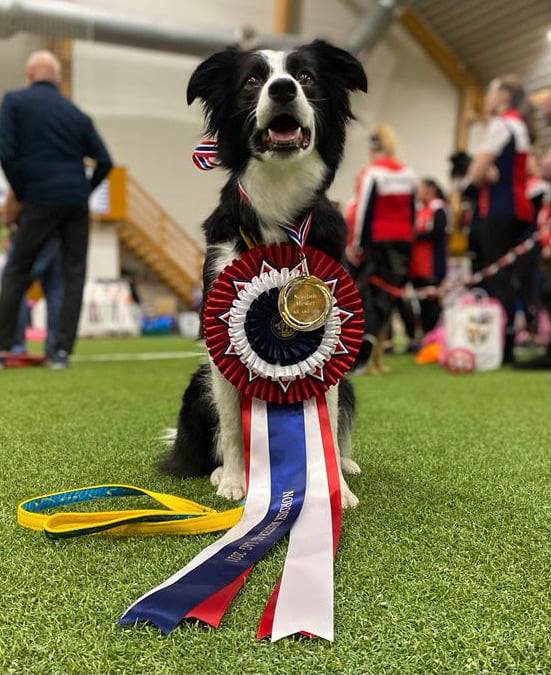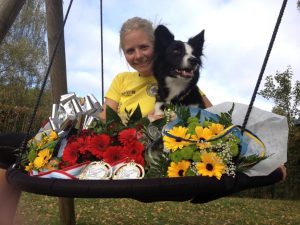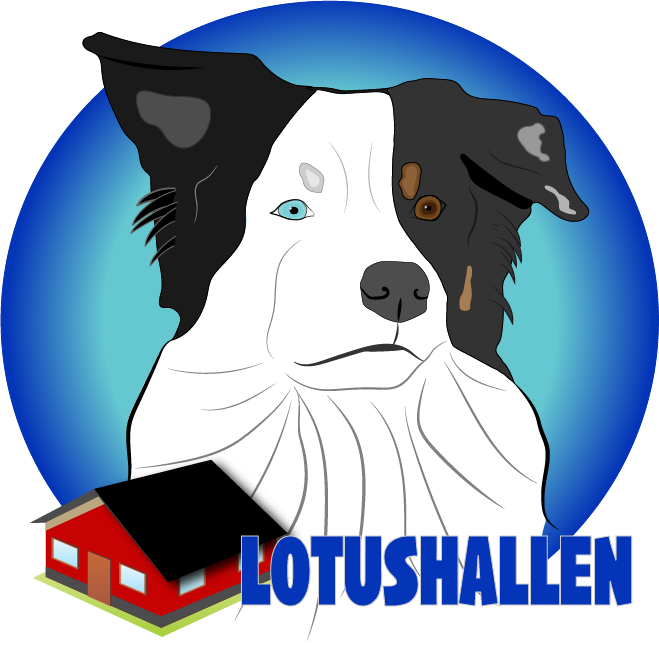Ok, I was excited and I had a favourable view of the method, but after about a week of training, I must say that I'm more than satisfied and Lilli has developed over my expectations. Already the second session of training I put the poles a bit closer. She could still run the same speed but the entries got a bit harder and she got a "tighter" feeling. Hard to explain the last part but I think you understand what I mean ;o). I made another video with clips from or training from second to tenth session and you will find it in the end of the post.
I'm not always well organized when I train but I have a clear basic idea in my mind what I want and the rest just comes with the feeling I think. The channel was a little different from the methods that I have used before but I had the same basic thoughts about what I wanted to teach the dog about slalom:
• I want her to run fast.
• I want her to understand where she has to get in, no matter where I am, where she comes from or what's around.
• I want her to understand she has to always complete the whole set, no matter how many poles there are, where I am, how I move/run/turn, where she's going next or what's around.
• I want her to get an efficient and gentle technique.
• I want her to love weaving!
So my plan was to make it really easy for her in the beginning, to make her not think too much, but just run! I gave her a pretty wide channel and I placed the toy in front. At the same time I wanted to introduce all the other points as soon as possible to let her get used to entrances, exits, distractions and to get the weaving technique. I tried to introduce all the other points already in the first session and after a few missed attempts she got the idea about the exercise and began to focus like in my important criteria’s.
[[{”fid”:”2668″,”view_mode”:”default”,”type”:”media”,”attributes”:{”height”:420,”width”:560,”class”:”media-element file-default”}}]]
The current width between poles (and some distracting dogs ;o))
Now I have trained about 10 short sessions with Lilli and she's doing full set of weaves, about 10 cm's width, without wires, from all angles, with all different exits and with speed and a lot of enthusiasm! I'm really pleased with her improvement. Of course several people has had the same success and this is not magic at all but I have seen that slalom is an obstacle that can become really complex, difficult, boring and frustrating for many people and dogs. It's also an obstacle where you can save a lot of time if you transport your self to the next good spot while the dog is weaving, you can save time if the dog has a good technique, if it's confident and if it pushes forward. I think many people go a detour in their training, waiting with difficulties until the dog gets good at slalom. Then my questions are; what's difficult and what does it mean to be good at slalom? Maybe we should ask each dog that question to get a good answer… or?
No, YOU have the answer! In my opinion the difficulties for the dog are things that aren't introduced and trained from the beginning. So, if you have any "problems", it's just to think what was missing in your dogs training when he/she started.
In all my training I'm trying to be a clicker my self. I use the real clicker in many situations but I think I use my self like a clicker more! I'm really involved in the training and I let the dog know when she's doing something extra good. It's about timing and about how to convey what you think is important. I use my voice, especially to reinforce something good while the dog is running. In that way the dog can continue after the right attempt, for example if it takes a difficult jump, a weave entry etc.
I'm not afraid of mistakes and my dog is not afraid of mistakes. I just give the dog some time to find out what I want and the dog knows I will tell when it's the right choice! I use a little "ops"-word, as I say with happy voice, when the dog is failing and then it's ready for another try. I'm never disappointed and I don't show the dog any bad or frustrated energy when it's failing in the training. I try to be as neutral as possible when it does a mistake and put all my positive energy in to the good tries! In this way I think I get a happy, brave and confident dog that always wants to try and find out what’s the point of the exercise.
During these ten sessions of weave-training with Lilli, I have varied entrances, exits, my own position, the reward position, the surrounding, distractions and of course the slalom position. I have also varied the width between the poles. For almost every training I've done the channel narrower, but sometimes I have made it wider again. I wanted to try to keep a balance between speed and to allow her to get into the weaving technique. Too long with wide channel would possibly make her surprised when it suddenly becomes narrow. At the same time I don't want to put it together too quickly so it gets too difficult until she feels confident with the current stage of training and she dares to push in all situations.
From the beginning I've had distractions around. Other obstacles, my dogs running around and in her way, toys in different places and walls close. As I said, we decide what's difficult for the dog. If I let her get used to all this from the very first time, if I let her see distractions like normal conditions while the weave training it self is still easy, I think I will get a dog that gets the idea about weaving pretty quick and I think she will be quite steady in her weaves.
At the tenth session I just wanted to see how much of the weaving technique she had learned so I tried without wires. She did what she did when the wires were on and it was more than I was expecting! The margin of error increased slightly at entrances and exits but it really was a small difference so I experimented a lot with different difficulties and the result was great!
Looking ahead, I will go back to wires and vary to have them on or not, and if we encounter an entrance as she has difficulty with, I will definitely put on one or two wires on the first poles instead for letting her fail too many times in a row. I think also it's a good idea to keep the wires on when I put the poles in a straight line.
I'm of the opinion that the wires should be on for a long time, until the dog can weave perfectly. This might sound a bit ambiguous; I like to have the wires on for a long time and I'm already trying to take them off… I like to experiment and try it my way and I have a great faith in my dog's intelligence, this is just how my training time usually looks. So, my goal is NOT to get the wires away as soon as possible and I advise people not to rush in the training but also not to get stuck. Instead, try things out, continuously evaluate and vary the training.
To ensure that training is adapted for each dog, timing the reward and being really involved and clear about what I appreciate is for me the most important parts. If you follow this, I think it's easy to get great results and fun training!
[[{”fid”:”2669″,”view_mode”:”default”,”type”:”media”,”attributes”:{”height”:315,”width”:560,”alt”:”Miss Lilli – slalom part 2″,”class”:”media-element file-default”}}]]











